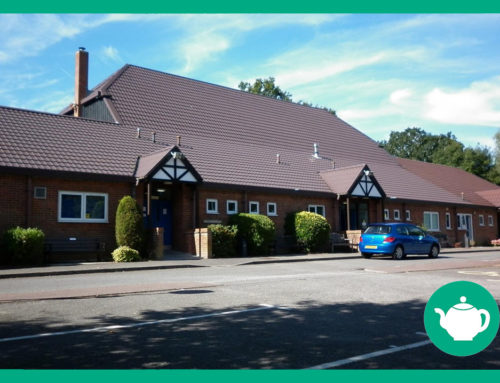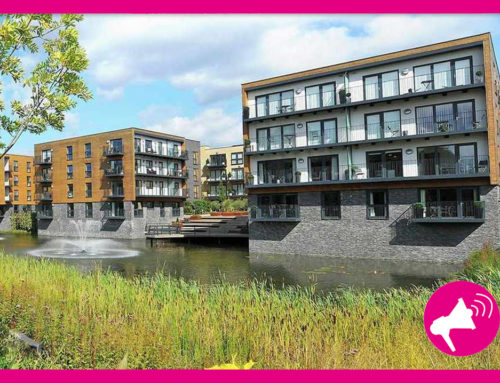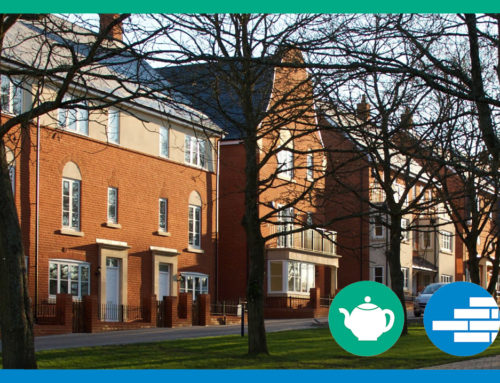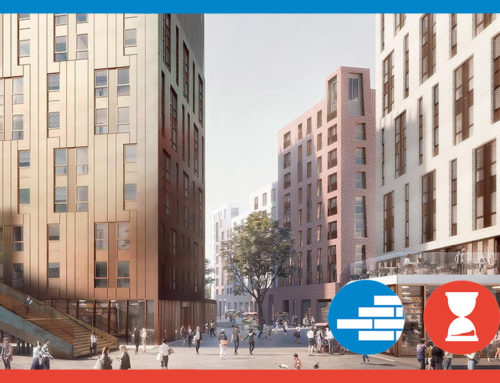Cambourne
This case study shows that an understanding of the social and community needs of new housing development is imperative to successful, socially sustainable places.
Location: Cambourne, Cambridgeshire
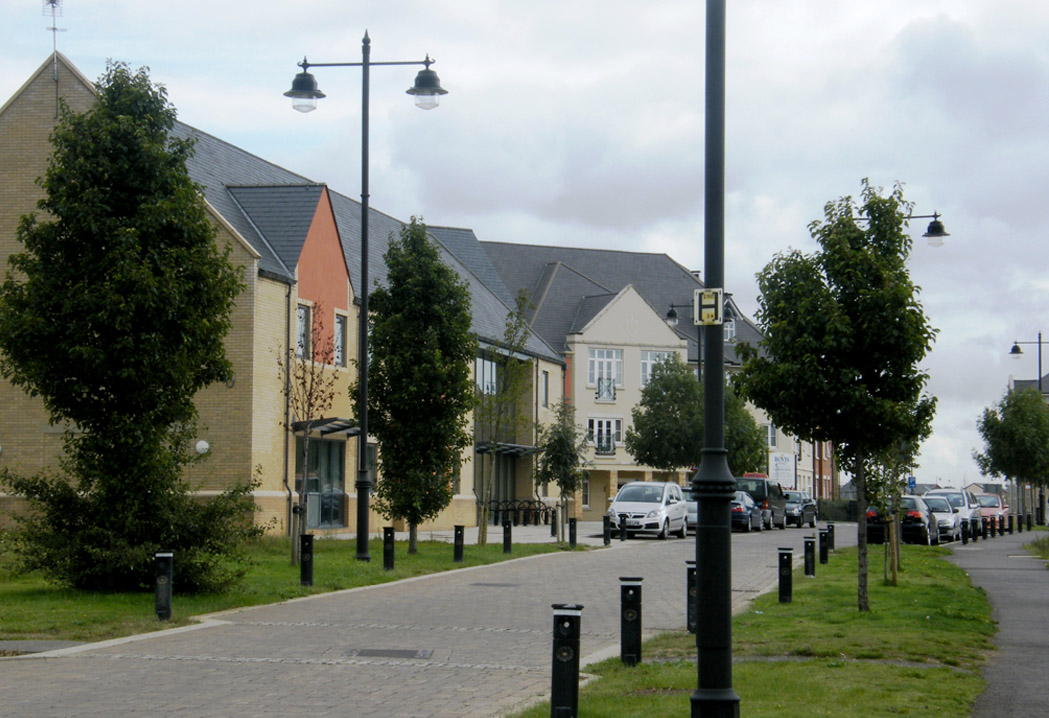
About
Cambourne is a new community west of Cambridge, one of the largest new housing settlements in the area. Construction began in 1998 and subsequent phases of development have expanded the development.
However, in the early days of the development problems emerged about isolation and mental ill health. By 2006, health professionals, schools, the church and other agencies were noticing that people living in Cambourne had high levels of mental health problems and emotional distress. These problems seemed to be affecting people from different backgrounds and residents who had no other history of mental ill health. This became so pressing that the public health team within the Primary Care Trust (PCT) commissioned research to understand the problem. Practitioners reported feeling that they could not meet the level of need, but they also started to question to what extent the environment of the new community was contributing to the problem.
The conclusion of the report prompted the PCT to commission the Cambridgeshire Council for Voluntary Services to investigate possible community development responses to the problem. This made a set of recommendations for housing and community services across the county.
In 2018, the Parish Council estimates that the population of Cambourne is around 12,000 living in 4,500 homes. (10) The social infrastructure has improved greatly and there are different spaces for people to meet, activities for different ages and interests, and a range of services and shops. The number of people experiencing mental ill health has declined to what would be expected of a comparable small town.
Project details
Cambourne was identified as a site of a new settlement in 1989, although building did not commence for a further nine years. Built from 1998 onwards, it is now the largest parish within the South Cambridgeshire district. The original masterplan envisaged three interconnected villages: Great Cambourne, Lower Cambourne and Upper Cambourne. The original planning consent was for 3,300 homes, of which 30% were affordable housing. More homes were subsequently built, and a planning application is under consideration for 3,500 homes at nearby Bourne airfield.
In the early days of the development there was awareness of the need to build social relationships and community support workers were employed for a short time at the beginning of the 2000s. Other support for community life were in place early in the development of the town, including the local newspaper The Cambourne Crier (12), a supermarket, GP, a dentist, allotments and a pub.
However, there were few places for people to get together with neighbours and to develop a sense of belonging and their own social networks. The PCT report concluded: “There was a serious lack of communal meeting space during the early years of the development. And that by 2007, although there was more space available, most of the opportunities for meeting others depend upon a “membership” of some sort: for example, you cannot attend a toddler group if you don’t have a toddler”. (4)
One local councillor who is still active on the county council commented about the situation at the time, “it is all well and good supplying support packs to people about what it was going to become. But they didn’t have anywhere for people to meet apart from each other’s houses. Only place was a portacabin on stilts. People could visit the community centre, but if you wanted to run a class, there wasn’t anywhere. The portacabin could only be used for very small meetings, there was no space for activities.”
Many people moved to Cambourne with high hopes, leaving their social and support mechanisms behind, and found no replacement in the town. At the same time, significant number of families moved into social housing from other areas, also with no connections from the area, often having had no say in the location of their future home, and no knowledge of the place. Cambourne has consistently had a high birth rate, creating high demand for childcare and children’s’ services and supports.
There were many negative perceptions of the community in its early days. The local media notably christened it “Crimebourne” and a number of studies highlighted issues over lack of public transport, anti-social behaviour and higher than average mental health issues. (1)
Over the following years, more facilities that support the community and enable people to develop their local social life have opened. The Parish Council was established in 2004, the church opened in 2009, and a new community space, The Hub, in 2008. The community space was reported to be very important, however building this was triggered by the completion of a certain number of homes (specified in the planning agreement) rather than by social need. A weekly community cafe is hosted in the Hub and there are a range of clubs and societies: book groups, sports teams, a bowling club, mother and toddler meetings, and a timebanking organisation that sees to volunteering and mutual help.
In December 2011 the Cambourne Fitness and Sports Centre was officially opened and in September 2013 Cambourne Village College opened. The high street has continued to expand with more restaurants and cafes. There is a community Facebook page. The population has also diversified, with a large Indian community moving into the town, from Hindu and Muslim backgrounds. A local stakeholder said this helped strengthen community bonds, “even though they came from the other side of the world they have formed their community naturally”.
The experience of Cambourne resonates with the evidence of UK New Towns and the phenomenon that became known as the “New Town Blues”. (11) Although the creation of community is a fundamental New Town objective, several reports have highlighted the tendency for built environment design and physical issues to dominate the planning process, with community and social provision falling off the agenda. These reports identified social facilities and community infrastructure as key requirements. They identified the need to put in place mechanisms for building social capital and for community support in order to create a sense of belonging for people.
However, the experience of Cambourne also shows that providing the right infrastructure is an evolving process. There will not be a fixed endpoint as community needs and aspirations will evolve and change over time, especially in new and growing settlements. There are still further needs for facilities and services in Cambourne to support community life.
Ruth Betson, district councillor for Cambourne noted in 2018 that more than half the population have responded to public consultations. “We want more retail opportunities, a swimming pool, provision for sports and better transport. Whilst most residents want to live in a ‘village’, Cambourne has in fact grown to the point where it’s a small ‘town’ and as such, adequate infrastructure and facilities need to be put in place to cater for our needs.” (6)
Key Details
Resources
The infrastructure that has helped support mental health after initial problems has been the mainstream social and leisure facilities provided. There has not been a specific funded contribution.
Community involvement
Community involvement has been on-going as part of the development process, it has not specifically addressed issues of social isolation or mental health.
Impact: What are the outcomes? Who benefits?
There have been no specific studies of income. The social costs of mental ill health are well documented and researched. (13)
So what?
What are the risks and challenges for initiating and also maintaining this initiative?
The case study illustrates the risks and challenges of not providing enough community infrastructures, and the problems that can arise from social isolation.
Key learning
The experience of Cambourne has influenced Cambridgeshire agencies’ understanding of the social and community needs of new housing development. In 2015 Cambridgeshire Council for Voluntary Services (CVS) commented “Evidence from the newer communities in the county is points to a high level of mental health support due to a lack of social provision in the early years of these places. They are not actually ‘communities’ at all but merely large housing estates with lots and lots of new people living in them. If Cambourne is anything to go by it takes the best part of 10 years and a lot of effort to begin to establish a successful and resilient community”. (5)
Reports from the PCT and CVS made a number of recommendations about future development. The PCT report, commissioned in response to concerns about mental ill health, concluded, “…planning for the hard infrastructure alone would never build a community and that it would only be done by a matrix of formal and informal opportunities or supported activities. There was a strong imperative for designing facilitated activities to meet the needs of future citizens and their households if they were to take part in, and join together with, other households to build a strong and cohesive community or indeed different communities.” (4)
The report made a set of recommendations for new and existing developments aimed at those responsible for building and planning new communities.
For new developments, those responsible must:
• Ensure that the concept of social and community development is considered alongside physical developments
• Ensure community facilities are available from the start, alongside schools and health provision
• Build the infrastructure for social cohesion and social capital into the framework e.g. ensuring development workers are part of the framework
• Require partners in the development to agree measures of social cohesion and build these into routine monitoring indicators
• Require regular review and evaluation of such indicators as part of a continuous improvement programme, with the local community as partners
• Ensure sustainability (resource, management and delivery)
For existing developments, those responsible must:
• Require developers and planners to review existing provision of the infrastructure for social cohesion
• Require developers and planners to remedy deficiencies during the later phases of the build
• Involve existing (adjacent) communities in the planning of new/the next phase of development
The Cambridgeshire CVS report which explored the implications for community development made a further set of recommendations for agencies in involved in planning new communities (8):
• At every stage of planning, ensure that partners have a well-defined and co- ordinated approach to community working
• Include a range of community roles that reflect the needs of a diverse population and are identified by an agreed methodology such as the ’People Proofing Principles’ identified by this project
• As an essential supplement to section 106 funding, partners to ensure there is mainstream funding to sustain the implementation of this approach
• Agree a monitoring system based on criteria that ensure people have opportunities for inclusion e.g. as illustrated by the ‘People Proofing Principles’. Include an action researcher to facilitate this process and to ensure that any required adjustments to the community support infrastructure are made in a timely and appropriate manner
Source/s of information:
(1) Report by LGiU –the local democracy think tank – “Localism & New Communities”: https://www.lgiu.org.uk/wp-content/uploads/2014/12/Localism-and-new-communities.pdf
(2) Future Communities webpage on Cambourne, Cambrdigeshire: https://www.futurecommunities.net/socialdesign/190/cambourne-cambridgeshire
(3) Social life Report ( 2012) for Future Communities consortium “Never Again: avoiding the mistakes of the past”: http://www.social-life.co/media/files/Never_Again.pdf
(4) REPORT: Goh, S & Bailey, P (2007) “The effect of the social environment on mental health: Implications for service provision in new communities: Cambridgeshire PCT” [URL: http://scambs.moderngov.co.uk/documents/s20573/Agenda%20Item%2010%20Improving%20Health%20Partnership%20Report.pdf]
(5) CCVS Website – Support for community & voluntary groups “Help us ensure Northstowe is a great place to live”: http://www.cambridgecvs.org.uk/news/view/47
(6)Cambridgeshire Live Website (5th Feb 2018) “Cambourne: the village that just grew and grew and grew”: https://www.cambridge-news.co.uk/news/history/cambourne-village-just-grew-grew-14236981
(7)The Guardian (6th April 2013) “Welcome to Toytown: what life is like in new-build Britain”: https://www.theguardian.com/society/2013/apr/06/new-build-britain-john-harris-housing
(8)REPORT: Building communities that are healthy and well in Cambridgeshire, A Project of the Cambridge City and South Cambridgeshire Improving Health Partnership, 2008. Cambridge Council for Voluntary Service
(9)South Cambridgeshire District Council Website: https://www.scambs.gov.uk/planning/new-communities/cambourne/
(10)Cambourne Parish Council website: https://www.cambourneparishcouncil.gov.uk
(11)REPORT: Bennet, J. (2005) From New Towns to Growth Areas Learning from the past. ippr
(12)Free monthly magazine “Cambourne Crier”: http://www.cambournecrier.org
(13)Faculty of Public Health “The cost of poor mental health”: https://www.fph.org.uk/policy-campaigns/special-interest-groups/special-interest-groups-list/public-mental-health-special-interest-group/better-mental-health-for-all/the-economic-case/the-costs-of-poor-mental-health/


